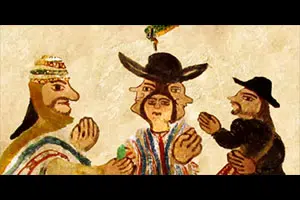 Ethnohistory is a scientific discipline that combines resources and analysis from anthropology and history . It is a branch of knowledge that introduces a historical point of view in addressing anthropological problems .
Ethnohistory is a scientific discipline that combines resources and analysis from anthropology and history . It is a branch of knowledge that introduces a historical point of view in addressing anthropological problems .
Before moving forward, it is important to mention that the definition of ethnohistory is often a matter of debate . There is no single discourse on its object of study nor is there consensus on its methodologies.
There are those who define ethnohistory as the study of the groups originating from a certain region according to the perspective of these communities . In this framework, it takes into account the way in which these societies conceived their contacts with other communities , generated either by commercial activity or by territorial conflicts.
Experts in ethnohistory maintain that an accurate description of a culture cannot be developed if one does not analyze how the members of said culture viewed their reality. That is why it seeks to understand how individuals represented their own history .
In other words, ethnohistory examines the historical journey of an ethnic group based on the interpretation of the documentation and records that its own members generated . In this way it aims to give prominence to the vision of conquered, persecuted or forgotten peoples, leaving aside Eurocentrism , racism and prejudices that often appeared in traditional historical studies, especially in the past.
Thus, ethnohistory reconstructs the historical development of the aboriginal communities of the American continent, for example, interpreting the vision of these cultures about themselves and not according to the perspective of the European conquerors.
Although it is known with certainty that the word ethnohistory was coined before the 20th century and that Paul Radin , a folklorist and cultural anthropologist from the United States, outlined a definition for it in 1933, it was not until 1954 that, thanks to the work by fellow American anthropologist and folklorist Erminie Wheeler-Voegelin , became an established discipline .
 In 1954, Wheeler-Voegelin began the publication of a newsletter that over time would become a magazine of ethnohistorical interest, precisely titled Etnohistoria . What prompted the birth of this field was the Indian Claims Commission in 1946, which sought to make clear the degree of justice of the transactions that had taken place throughout the expansion of North America.
In 1954, Wheeler-Voegelin began the publication of a newsletter that over time would become a magazine of ethnohistorical interest, precisely titled Etnohistoria . What prompted the birth of this field was the Indian Claims Commission in 1946, which sought to make clear the degree of justice of the transactions that had taken place throughout the expansion of North America.
These transactions were celebrated in the early days of the country, when many colonizers bought land from the natives, since in most cases they were defrauded. The big problem arose when the tribes that claimed their lands had no way of proving that they had occupied them before their usurpers.
It was there that the work of anthropologists became crucial for them, because they kicked off what would be a meticulous study that would little by little recognize the rights of the first peoples. Over the years, ethnohistory expanded its interest groups, beyond the native indigenous people of the North American continent, to include Mesoamerican civilizations, some African and Polynesian tribes.
It should be noted that the character or nature of ethnohistory has not been clearly defined: there are those who consider it a branch of anthropology and history, a discipline, a process or a method. In any case, its focus on the experience of the cultural protagonists themselves is not in doubt, and is the key to offering an authentic view, removed from the prejudices and preconceptions of Western history. Its source of work is archaeological remains, testimonies and the legal record.
